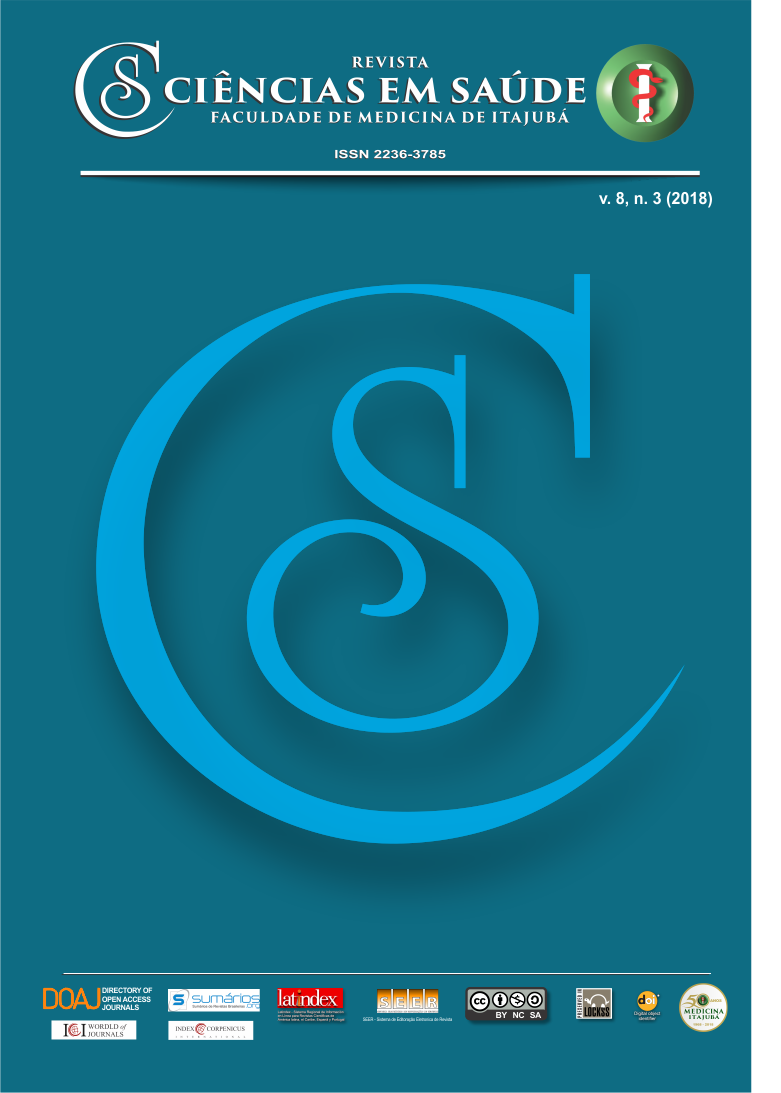Nutritional status of children and adolescents: case-study in Southeastern, Brazil / Estado nutricional de crianças e adolescentes: estudo de caso no sudeste brasileiro
Main Article Content
Abstract
Introduction: The nutritional status in cases of overweight and obesity in children and adolescents is considered a global health reference for future trends and for enabling strategic planning. The main reason for this is the increase in the consumption of low-nutrient and high-calorie food. Aims: The present study aimed at verifying the nutritional status of children and adolescents, as well as demonstrating nutritional trends. Methods: Some schools in the city of São Gonçalo do Sapucaí, southeastern Brazil, were visited. The student’s weight, height and age were assessed in a total of 646 students, from which 198 were preschoolers, 369 schoolchildren and 79 adolescents. Results: Nutritional assessment uses diagnostic methods to assess factors of nutritional disorders. Tested by a chi-square, the evaluation shows that overweight, which is considered one of the most alarming public health problems in Brazil, is the current problem. Conclusion: It was concluded that there was a low rate of child malnutrition and an actual overweight rate. The relation among health, sports and leisure and education departments is very relevant to create nutritional intervention programs which are associated with the practice of physical activity linked to nutritional education aiming at reducing overweight rates and childhood obesity.
Keywords: Overweight; Obesity; Anthropometry; Nutritional transition
RESUMO
Introdução: O estado nutricional em casos de sobrepeso e obesidade em crianças e adolescentes é considerado uma referência global de saúde para tendências futuras e para possibilitar o planejamento estratégico. A principal razão para isso é o aumento no consumo de alimentos com baixo teor de nutrientes e alto teor calórico. Objetivos: O presente estudo teve como objetivo verificar o estado nutricional de crianças e adolescentes, bem como demonstrar tendências nutricionais. Métodos: Algumas escolas foram visitadas na cidade de São Gonçalo do Sapucaí, Sudeste, Brasil. O peso, altura e idade foram avaliados em um total de 646 alunos, sendo 198 pré-escolares, 369 escolares e 79 adolescentes. Resultados: A avaliação nutricional usa métodos diagnósticos para avaliar fatores de distúrbios nutricionais. Testada pelo teste qui-quadrado, a avaliação mostra que o excesso de peso, considerado um dos problemas de saúde pública mais alarmantes no Brasil, é o problema atual. Conclusão: Concluiu-se que havia uma baixa taxa de desnutrição infantil e uma taxa real de excesso de peso. A relação entre os departamentos de saúde, esporte e lazer e educação é muito relevante para criar programas de intervenção nutricional que estão associados à prática de atividade física vinculada à educação nutricional visando reduzir as taxas de sobrepeso e a obesidade infantil.
Palavras-Chave: Sobrepeso; Obesidade; Antropometria; Transição nutricional
Article Details
Authors maintain copyright and grant the HSJ the right to first publication. From 2024, the publications wiil be licensed under Attribution 4.0 International 
 , allowing their sharing, recognizing the authorship and initial publication in this journal.
, allowing their sharing, recognizing the authorship and initial publication in this journal.
Authors are authorized to assume additional contracts separately for the non-exclusive distribution of the version of the work published in this journal (e.g., publishing in an institutional repository or as a book chapter), with acknowledgment of authorship and initial publication in this journal.
Authors are encouraged to publish and distribute their work online (e.g., in institutional repositories or on their personal page) at any point after the editorial process.
Also, the AUTHOR is informed and consents that the HSJ can incorporate his article into existing or future scientific databases and indexers, under the conditions defined by the latter at all times, which will involve, at least, the possibility that the holders of these databases can perform the following actions on the article.

